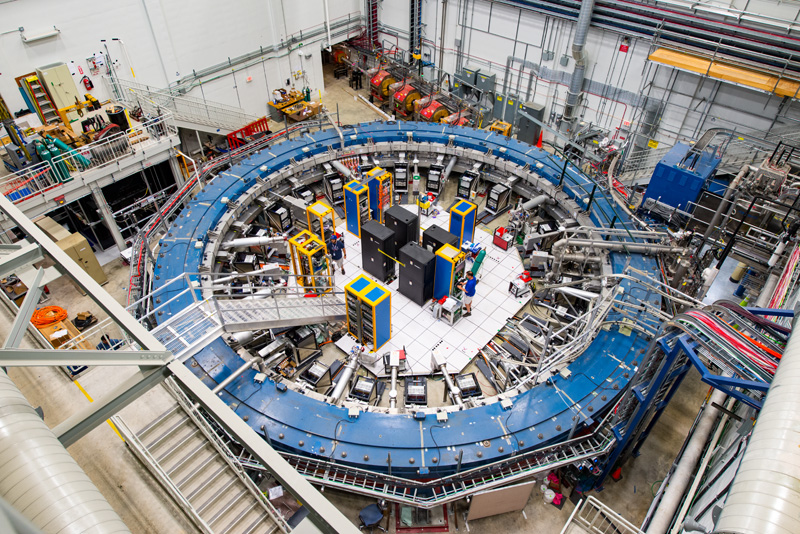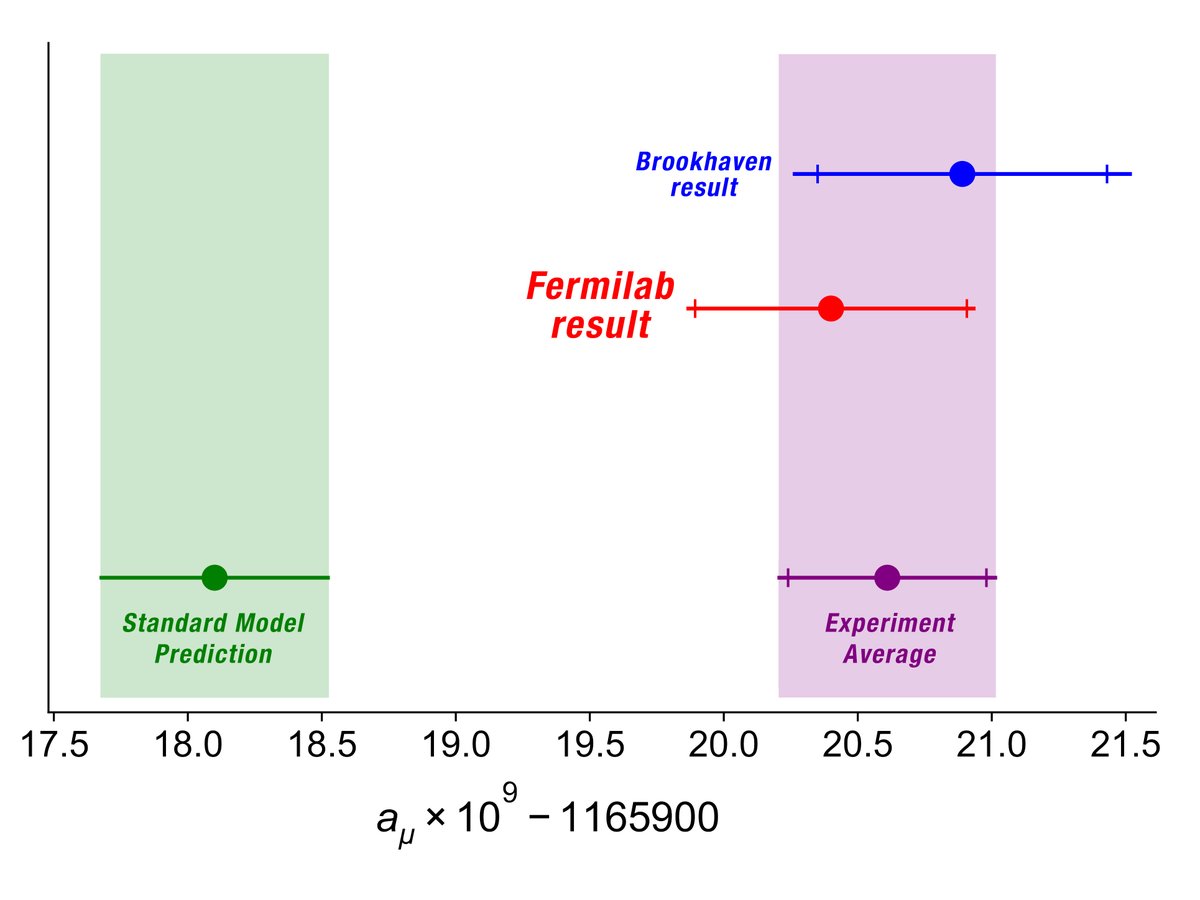The CDF collaboration at Fermilab announces the most precise ever measurement of the #Wboson mass to be in tension with the Standard Model:
news.fnal.gov/2022/04/cdf-co…
news.fnal.gov/2022/04/cdf-co…

The #Wboson is a messenger particle of the weak force. It is responsible for the nuclear processes that make the sun shine and particles decay. CDF scientists have now determined the W boson’s mass with a precision of 0.01%—twice as precise as the previous best measurement. 

CDF researchers have worked on achieving increasingly more precise measurements of the #Wboson mass for more than 20 years. The new result uses the entire dataset collected from the Tevatron collider at Fermilab. 

This CDF result is based on the observation of 4.2 million #Wboson candidates, about four times the number used in their 2012 analysis. Precision measurements such as this one allow scientists to test their best theory, the Standard Model of particle physics. 

The new #Wboson mass value shows tension with the value scientists expect based on the Standard Model. If confirmed, this measurement suggests the potential need for improvements to the Standard Model calculation—or extensions to the model. 

The new value is in agreement with many previous #Wboson mass measurements, but there are also some disagreements. Future measurements will be needed to shed more light on the result.
news.fnal.gov/2022/04/cdf-co…
news.fnal.gov/2022/04/cdf-co…
See the paper published in Science: science.org/doi/10.1126/sc…
And learn more about the CDF collaboration:
cdf.fnal.gov
#Wboson
And learn more about the CDF collaboration:
cdf.fnal.gov
#Wboson
Want more info? Members of the CDF collaboration will give a scientific presentation with details about their measurement tomorrow, April 8, at 4 p.m. CDT.
theory.fnal.gov/events/event/c…
theory.fnal.gov/events/event/c…
• • •
Missing some Tweet in this thread? You can try to
force a refresh












